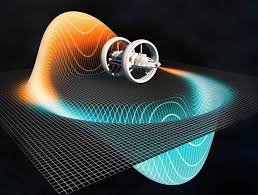Could humanity truly master gravity to revolutionize space travel? This question has fascinated scientists, engineers, and futurists for decades. At the heart of this inquiry lies the concept of gravitic propulsion systems a theoretical technology that could redefine how we traverse the cosmos.
Gravitic propulsion systems, often depicted in science fiction, promise an advanced method of movement by manipulating gravity itself. But are these systems grounded in scientific reality, or do they belong to the realm of imagination? This blog delves into the fascinating world of gravitic propulsion, exploring its scientific foundation, potential, and whether it could ever move from concept to reality.
What Are Gravitic Propulsion Systems?
Gravitic propulsion systems are advanced theoretical technologies designed to harness or manipulate gravitational forces for propulsion. Unlike traditional methods, such as chemical rockets or ion drives, which rely on thrust generated by expelling fuel, gravitic propulsion would eliminate the need for onboard propellant entirely.
At their core, these systems would:
- Manipulate gravitational fields to create movement.
- Rely on the principles of physics, such as spacetime manipulation, rather than combustion.
- Enable faster, more sustainable, and efficient space travel.
In simpler terms, imagine a spacecraft “falling” toward its destination by bending the fabric of spacetime, rather than relying on traditional engines to push it forward. This radical shift in propulsion could revolutionize space exploration, potentially making interstellar travel a reality.
The Science Behind Gravitic Propulsion
The concept of gravitic propulsion finds its roots in Einstein’s General Theory of Relativity, which describes how massive objects warp spacetime and create the phenomenon we know as gravity. If we could manipulate these gravitational fields, it might be possible to propel a spacecraft without traditional thrust mechanisms.
Key scientific theories include:
- Warp Bubbles (Alcubierre Drive): Proposed by physicist Miguel Alcubierre, this concept involves compressing space in front of a spacecraft while expanding it behind, effectively allowing faster-than-light travel without violating the laws of physics.
- Spacetime Manipulation: By bending spacetime in a controlled manner, gravitic propulsion could theoretically enable smooth, efficient movement through space.
- Exotic Materials: Research into materials like negative mass or metamaterials could pave the way for systems capable of generating or manipulating gravitational fields.
While these ideas remain theoretical, they represent a growing field of interest in advanced propulsion science, inspiring researchers to explore the boundaries of what’s possible.
Real-World Research and Current Possibilities
The transition from theory to practical application is challenging, but some real-world research and developments hint at the potential of gravitic propulsion systems.
Notable advancements include:
- NASA’s Innovative Research: The agency has explored concepts related to warp drive and exotic propulsion technologies through initiatives like the NASA Eagleworks lab.
- U.S. Navy Patents: In recent years, patents for “anti-gravity” aircraft have been filed, sparking speculation about secretive government projects related to gravitic propulsion.
- Private Aerospace Companies: Organizations such as SpaceX and Blue Origin, while focused on traditional propulsion systems, may eventually expand their research into gravitational propulsion as technology advances.
Despite the excitement surrounding these developments, gravitic propulsion remains speculative. The energy requirements, lack of experimental evidence, and technological barriers underscore how far we still are from making this technology a reality.
Gravitic Propulsion in Science Fiction
Science fiction has long been the playground where futuristic technologies, including gravitic propulsion, come to life. From starships capable of bending spacetime to UFO lore suggesting advanced anti-gravity technology, pop culture has played a major role in shaping our imagination of what gravitic propulsion could achieve.
Examples from Science Fiction
- Star Trek’s Warp Drive: The iconic warp drive uses a fictional form of gravitic propulsion by manipulating spacetime to travel faster than light. This concept has inspired scientists to explore theoretical models like the Alcubierre Drive.
- Interstellar Travel in Movies: Films such as Interstellar and Star Wars feature ships that seem to defy traditional physics, leveraging gravity or manipulating spacetime for seamless travel across the galaxy.
- UFO Lore: The idea of alien spacecraft using anti-gravity propulsion has fueled conspiracy theories and scientific curiosity alike, prompting researchers to wonder if such technology could ever be replicated.
Science Fiction’s Role in Real Innovation
Many groundbreaking technologies—like mobile phones and artificial intelligence—were first envisioned in science fiction before becoming real. Gravitic propulsion, though still speculative, has the potential to follow this pattern by inspiring scientists, engineers, and policymakers to push the boundaries of what’s possible.
Challenges and Limitations
While the idea of gravitic propulsion sparks immense curiosity, its realization faces numerous hurdles.
Key Challenges
- Lack of Experimental Evidence: Theoretical concepts like warp bubbles or negative mass have not yet been proven in laboratory conditions.
- Technological Barriers: Current technology cannot generate or manipulate gravitational fields with the precision required for propulsion.
- Energy Requirements: Manipulating spacetime would demand an astronomical amount of energy, far beyond what is currently achievable with modern power sources.
Skepticism in the Scientific Community
Although the concept is rooted in Einstein’s theories, many scientists remain cautious about gravitic propulsion due to the lack of practical evidence and the speculative nature of related technologies. Some dismiss it as an overreach of theoretical physics, while others argue it’s worth pursuing for its transformative potential.
Future Implications of Gravitic Propulsion
If gravitic propulsion systems ever become a reality, they could revolutionize space exploration and redefine humanity’s relationship with the universe.
Potential Applications in Space
- Interstellar Travel: Gravitic propulsion could allow humans to reach distant star systems within reasonable timeframes, making the colonization of exoplanets possible.
- Colonization of Other Worlds: Efficient and sustainable travel could enable large-scale missions to establish human settlements on the Moon, Mars, and beyond.
Applications on Earth
- Aviation and Transportation: Gravitic technology could transform the way we travel on Earth, enabling vehicles that float or glide with little to no friction.
- Energy Innovations: Gravity manipulation might open up new ways to harness energy efficiently, reducing our reliance on fossil fuels.
Breakthroughs in Physics Could Pave the Way
Advances in quantum mechanics, materials science, and energy generation could one day make gravitic propulsion feasible. Although the timeline is uncertain, the dream of harnessing gravity for propulsion remains a powerful motivator for researchers worldwide.
Ethical and Environmental Considerations
The potential to manipulate gravity comes with profound ethical and environmental questions that must be addressed as the technology develops.
Ethical Concerns
- Control and Misuse: Who would own or regulate gravitic propulsion systems? If controlled by a few, the technology could exacerbate global inequality or be weaponized for military purposes.
- Impact on Society: Transformative technologies often disrupt economies and industries. How would gravitic propulsion affect existing space programs, transportation industries, or even global geopolitics?
Environmental Risks
- Impact on Earth’s Ecosystems: Manipulating gravitational forces could have unforeseen effects on Earth’s natural systems, potentially destabilizing ecosystems or causing environmental harm.
- Space Debris Management: Faster and more frequent space travel may contribute to the growing problem of orbital debris, posing risks to satellites and future missions.
The Need for Oversight
To ensure responsible development, ethical oversight is crucial. Governments, scientific organizations, and global entities must collaborate to establish regulations that prioritize safety, equity, and sustainability as gravitic propulsion technology evolves.
Conclusion
Gravitic propulsion systems stand at the crossroads of science fiction and future reality. While rooted in solid theoretical physics, including Einstein’s general relativity and concepts like warp bubbles, this revolutionary idea remains far from practical implementation. The immense energy demands, lack of experimental evidence, and technological barriers remind us that the road to realizing this dream is a long one.
However, the potential of gravitic propulsion is too transformative to dismiss. From enabling interstellar travel to revolutionizing transportation on Earth, its implications could reshape humanity’s future. Though challenges persist, history proves that breakthroughs often begin as bold ideas. Explore our in-depth article for a closer look at how mastering gravity might one day unlock the ultimate frontier.






